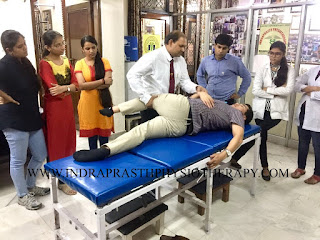ANKYLOSING SPONDYLITIS - #Ankylosing #spondylitis is an inflammatory disease that can cause some
of the vertebrae in your spine to fuse together. This fusing makes the
spine less flexible and can result in a #hunched-forward #posture. If ribs
are affected, it may be difficult to breathe deeply. Ankylosing spondylitis affects men more often than women. Signs and
symptoms of ankylosing #spondylitis typically begin in early adulthood.
Inflammation also can occur in other parts of your body. Constant pain and stiffness in the low back, buttocks, and hips that
continue for more than three months. Spondylitis often starts around the
sacroiliac joints. Ankylosing spondylitis can cause an overgrowth of the bones, which may
lead to #abnormal joining of bones, called "bony fusion." Fusion
affecting bones of the neck, back, or hips may impair a person's ability
to perform routine activities. Spondylitis also may affect some of the ligaments and tendons that attach to bones. Ankylosing spondylitis is a long-term disease that affects the joints near the center of
the body, especially the spine and sacroiliac joints. The sacroiliac
joints are located at the lowest end of the spine where the sacrum meets
the iliac bone in the pelvis. AS can lead to eventual fusion of the
spine. Peripheral joints away from the spine, such as the hips and
knees, may also be involved.
SYMPTOMS
SYMPTOMS
- The joint between the base of your spine and your pelvis
- The vertebrae in your lower back
- The places where your tendons and ligaments attach to bones, mainly in your spine, but sometimes along the back of your heel
- The cartilage between your breastbone and ribs
- Your hip and shoulder joints




No comments:
Post a Comment